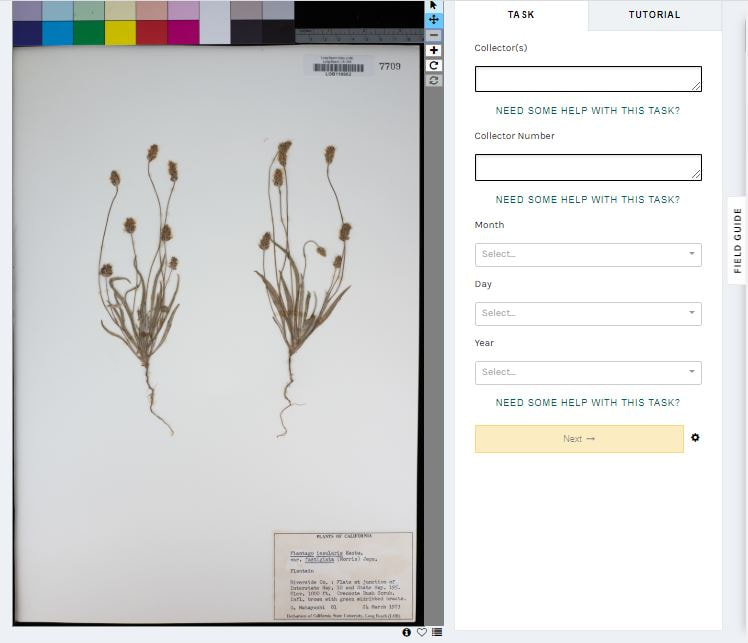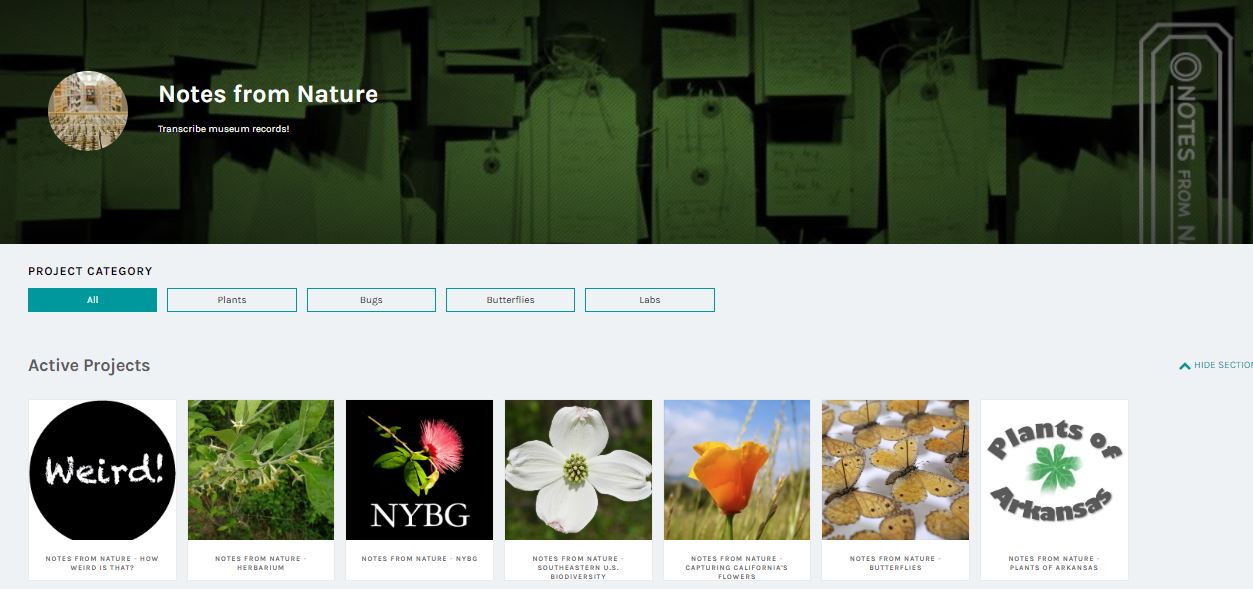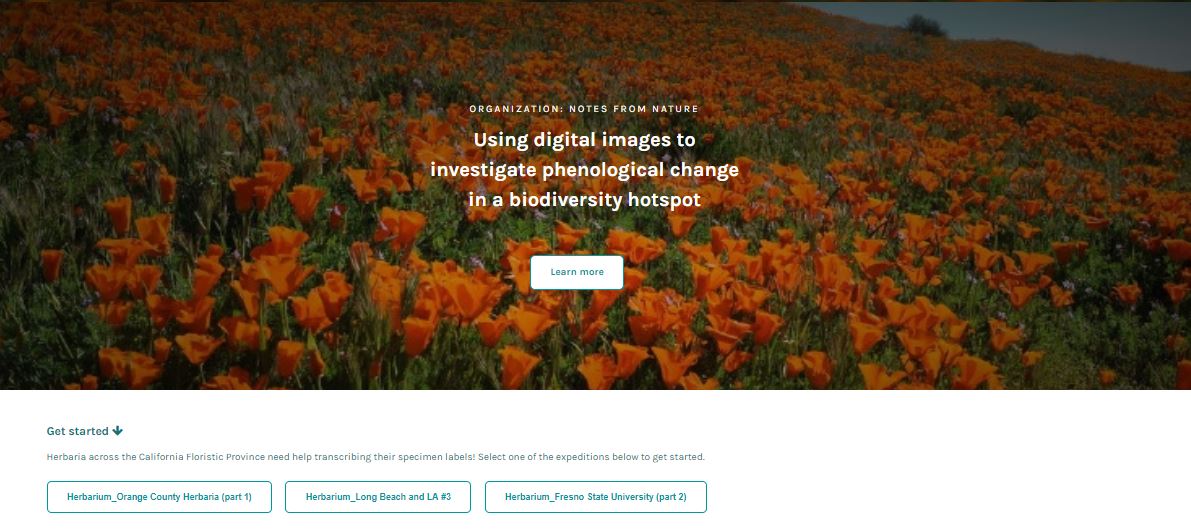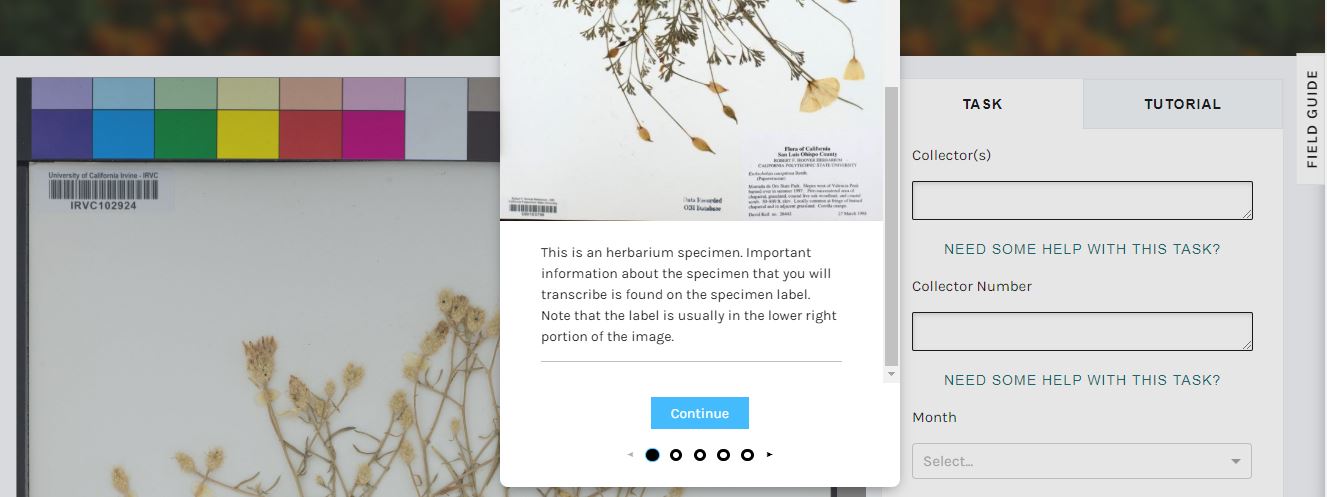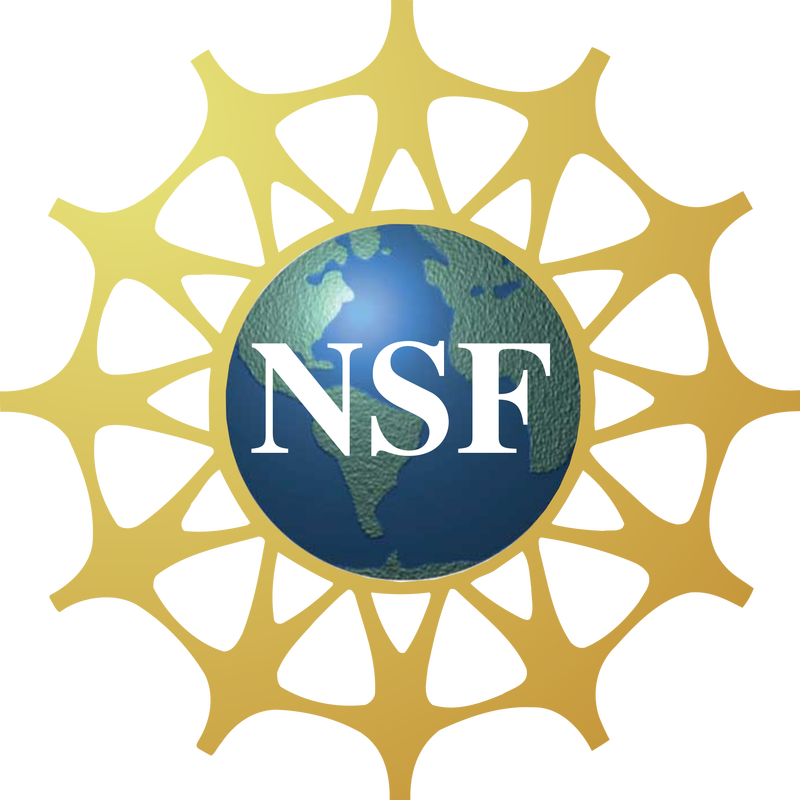No, this isn't a post about donating money, reducing waste, or calling your representatives (all important actions!), we're talking about empowering science, particularly that which examines the effects of anthropogenic change on Earth's biodiversity.
You don't need to be a trained scientist to help advance science. In fact, you can contribute to California botany and change biology from the comfort of your own home using Notes from Nature, a user-friendly website that enables you to view high-resolution images of plant specimens and transcribe data from the specimen labels.
The California Phenology Network is uploading thousands of herbarium specimen images to Notes from Nature for transcribing, and we need your help to get 'er done!
- Visit NotesFromNature.org (the home page may take a couple seconds to load).
corner of the page.
be found by clicking the Field Guide tab on the right side of the page, or by clicking any of the links
labeled NEED SOME HELP WITH THIS TASK?
specimens and the project.
- Feeley KJ, Hurtado J, Saatchi S, Silman MR, Clark DB. 2013. Compositional shifts in Costa Rican forests due to climate-driven species migrations. Global Change Biology 19(11). https://doi.org/10.1111/gcb.12300
- Willis CW, Ellwood ER, Primack RB, Davis CC, Pearson KD, Gallinat AS, Yost JM, Nelson G, Mazer SJ, Rossington NL, Sparks TH, Soltis PS. 2017. Old plants, new tricks: phenological research using herbarium specimens. Trends in Ecology and Evolution. 32(7):531-546. https://doi.org/10.1016/j.tree.2017.03.015
